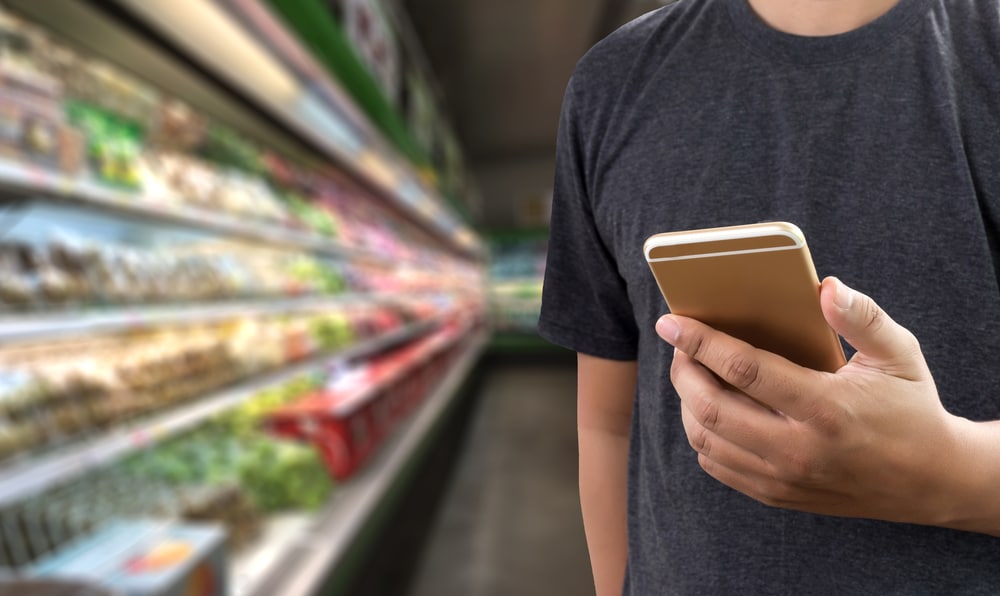A common mistake brands make when implementing a social media branding strategy is that they choose to use their pages to market toward consumers, rather than engage with them. Continue reading “Implementing the best social media branding strategy for your brand”
Category: Marketing
The pros and cons of leveraging white label branding as a marketing strategy

The pros and cons of leveraging white label branding as a marketing strategy
Mass-market strategies are entirely dependent on sales volume. In mass marketing, CPG brands often find themselves competing against retailers—through private label products—to gain price-focused or brand-loyal customers. As such, to properly implement a white label branding strategy, a brand must already be established and have a large following. Only then will they be able to use white label branding to increase market share.
What is white label branding?
White label branding involves two companies creating one product. One company manufactures the product, then the brand repackages the product as their own. Often, this is confused with outsourcing, but they’re not necessarily the same. In white labeling, a brand can trade on its stronger reputation and consumer awareness to sell the products for a higher amount than the manufacturer would have. It’s a means of keeping production costs down while also improving supply.
This also should not be confused with private labeling. A private label brand is one exclusively created for a specific retailer. While similar to white label branding, they’re not entirely the same, as the private label product is exclusive. A white label product’s distribution is wholly controlled by the brand.
Many CPG brands have embraced white labeling in recent years to keep production up even as labor and supply costs increase. In some cases, this strategy can help a brand gain market share or compete against other private label options in the store.
The Upside of White Label Branding
White label branding is popular among CPG brands because these brands are in a mass volume business. They must be able to supply many consumers in a diverse set of markets. CPG brands often reap the following benefits as a result of white labeling.
Increased supply:
Brands can double production through the resources of the manufacturer. Through this supply, brands can expand into new markets and cultivate new customers.
Reduced cost of production:
The strategy within white labeling involves using a brand’s reputation to sell a similar, yet cheaper to produce, product. This allows brands to reduce their costs of manufacturing while also enjoying the benefit of important existing consumer relationships.
Rapid brand growth:
Brands will be better prepared to expand their market share through white label branding because they’ll be able to produce a large number of products at a lower price.
Simplified new market entrance:
White label branding can be an excellent option for establishing new channels in emerging markets when in the past it would have been cost-prohibitive. Brands often choose to set up labeling facilities near production plants to eliminate the high cost of shipping, and sell products directly to the market.
Improved customer access:
The producers would likely have to sell their products at a much lower cost due to their lack of reputation. By working in a white labeling arrangement, the producer gets immediate attention from brand-loyal consumers.
Leverage against private labels:
Private label products create a significant issue for CPG brands, who often can’t compete with the low costs of these store-brands. White labeling evens the playing field in the shopping aisle so CPG brands can gain a competitive edge.
Faster innovation:
Brands can benefit from improvements in products from their production partners, as the manufacturer is solely focused on creating and improving the product. This gives the producer more time and resources for research and development, while offering the brand the opportunity to provide updated products to consumers.
Why White Label Branding Doesn’t Always Work
White label branding requires the brand to have an established following before implementation. The strategy relies on a brand’s reputation to carry the sales of another product, so its market clout will play a significant role in the strategy’s success. Here are a few of the reasons why white label branding may not be ideal.
Inconsistent quality:
Probably one of the biggest concerns with white label branding is the consistency of the products. Brands establish their own quality controls. The producers of white label brands may not follow those same procedures, causing an issue with product consistency.
Less control:
Brands lose control of the production process when using a white label strategy. Meanwhile, producers lose control of the marketing, distribution, and sales strategies for products. To participate in one of these strategies, brands and producers must be willing to give up a significant portion of their control.
Expensive implementation:
While brands will incur fewer production costs over time, they may incur higher costs while establishing one of these programs. The brand will have to purchase and repackage a large number of products and develop packaging facilities, requiring a higher initial investment than other marketing strategies.
Potential liability:
Brands may have to take on the responsibility for any issues consumers experience while using the white label product. Producers may be in locations that are less strict with regards to specific regulations, meaning there is a potential risk to the brand if standards fall short of those required for sale in the U.S.
Supply chain cost increases:
Brands will need to incur the cost of obtaining these products and then repackaging them for sale, so production costs are not entirely eliminated.
Potentially alienating customers:
If quality changes as a result of a white label strategy, brands will see loyal customers go elsewhere. Quality control is a vital part of any white labeling strategy.
Not suitable for smaller brands:
White labeling requires an existing brand presence, as the entire strategy hinges on the popularity of the brand. Without it, the white label branding strategy will be ineffective.
New market risk:
Popular brands often try to set up shop in new markets with a white labeling strategy, but this doesn’t always work. The problem with new global markets is there is not the same level of brand awareness. As such, sales potential is lower.
When to Consider White Labeling
White labeling is a mass-market strategy designed for increasing market share and adding revenue streams. Brands which have plateaued in certain markets or are having trouble keeping up with demand can consider this a way to improve sales and increase supply. Brands need to have significant resources already at their disposal. They should have an established following and marketing channels which can be leveraged to connect with consumers in growth markets.
It’s also good for brands that need to compete with the ever-growing pool of private label brands available exclusively through retailers. A white label strategy may permit these brands to be more competitive on price point, though there are other ways that brands can compete without the need to outsource production.
Alternatives to White Labeling for Competing With Retailer Brands
Private label brands have an edge when it comes to placement on the store shelves. Retailers can obviously give these exclusive brands priority shelf space, and they can target price-conscious consumers. The competition with this type of brand doesn’t happen on TV or via digital marketing. It happens right in the shopping aisle.
Whether or not brands choose to use a white label branding strategy, they’ll still need to find ways to stand out against these offerings on the store shelves. There are a few options brands can consider, most of which revolve around mobile apps.
Location-based marketing:
Location-based marketing allows brands to connect with consumers based on their location. For example, consumers can receive notifications about products on sale at a nearby store. This reminds them of the brand’s products as they’re in a purchase mindset, which improves the likelihood of a sale.
Incentivized in-store interaction:
Shopkick uses this as a strategy in helping brands gain sales. Through the app, the consumer is encouraged to use their smartphone to scan the UPC codes of specific products. In exchange, the consumer receives kicks (aka rewards points) which they can redeem later for free gift cards. This strategy incentivizes the consumer to physically seek out and handle the product in the aisle, which primes them for purchase.
Loyalty points:
Loyalty points are critical in any kind of incentivized interaction campaign that’s not reliant on discounts. Consumers often perceive rewards points as having a higher value than their simple dollar amount. This is because the consumer gets an emotional return for collecting and redeeming these points. As such, brand-specific loyalty points can act as a good avenue for gaining in-store sales from price-focused consumers.
Personalized offers:
In some cases, consumers can receive personalized offers based on their prior purchase history. This personalization connects the consumer to the brand and inspires brand affinity.
How brands can stay top-of-mind throughout the consumer buying process

For brands, establishing a connection during the consumer buying process is critical for gaining sales. Continue reading “How brands can stay top-of-mind throughout the consumer buying process”
Top factors influencing buying decisions and how to leverage them

When looking at the factors influencing buying decisions specific to CPG brands, brands should focus on three particular elements: price, perceived quality, and loyalty. Continue reading “Top factors influencing buying decisions and how to leverage them”
5 steps to a successful integrated marketing strategy

An integrated marketing strategy can be a crucial part of creating brand awareness and building consumer trust. Continue reading “5 steps to a successful integrated marketing strategy”
5 Ways to Launch a New Product That Will Beat Out the Competition

5 Ways to Launch a New Product That Will Beat Out the Competition
There are many ways to launch a new product, but only a few that garner the attention needed to make that launch a success. The failure rate for new products launched on an annual basis hovers around approximately 80%, so CPG brands already have the odds stacked against them. Rolling out a new product creates a need to shift marketing strategies for established products in a new direction.
A small but influential segment of consumers could have the potential to be responsible for a new product’s success. This segment represents the individuals who will drive awareness of the new product and make up its regular user base. For this reason, a new product launch must be targeted specifically to these consumers. This means connecting with influencers, testing markets, and preparing a pre-launch strategy. Most product launches will face challenges, but there are strategies that can be implemented to work around every single one and ensure success.
Common Problems in CPG Product Launches
While the measure of success for a CPG product launch can vary widely, it’s commonly recognized that the vast majority of new CPG products don’t achieve that status. The main reason is apparent. There aren’t enough consumers to go around when compared to the total number of products available. Beating the odds is about marketing. Often, when a new CPG product fails to catch on, it’s due to one of six reasons.
Awareness
Pre-launch is a bit of a challenge, as brands must let the public know a product is coming out, without actually launching the product. Without the right pre-launch strategy, a product could be finished before it ever hits the market.
Competition
Every day, a new competitor to any CPG product can potentially enter the market. It also doesn’t help that the economy is globalized thanks to digital access which creates a situation where consumers can easily purchase items sold anywhere in the world. Also, challenger brands can pull market share from established companies simply through the power of social media.
Saturation
The sheer number of CPG products available to consumers creates a problem which is often insurmountable for brands. If brands can’t find a way to differentiate products in their crowded category, sales will flounder.
Loyalty
Loyalty poses a threat to any brand when that loyalty is to a competitor. While it may be more challenging to establish loyal relationships with customers, once set, these relationships are stable.
Longevity
Even products which start strong can fail to gain the momentum they need, with sales tapering off to nothing after the initial launch campaign is complete. While in some cases, that’s how the products were designed, in others, longevity is imperative to success.
Marketing Mismatch
Strategies must align with an audience. Even the most innovative marketing methods can fail when they don’t align with the target audience. Brands must genuinely understand the audience they’ll be targeting when their new product is released.
There are a lot of pitfalls in launching a new product. However, even with the odds against them, brands can achieve success by laying out a strategy which includes taking advantage of technological innovation.
#1: Follow a Pre-Launch Plan to Improve Awareness
A brand can fail before their product ever reaches the market if a pre-launch marketing plan isn’t laid out. During a pre-launch is the time to iron out the kinks in a campaign by testing it in front of target markets. A few critical parts of a digital pre-launch include the following.
Pre-order Priming
Getting consumers to pre-order a product before it’s rolled out to the masses can drive awareness and interest. It can also improve visibility for the product in online shopping sites, allowing it to rank even before its release.
Establishing Critical Audiences
Brands need to develop the audiences which are essential for their success early on—before the product’s release. The pre-launch stage allows brands to calibrate this audience for the best possible awareness upon release.
Review Aggregation
Brands must collect and cultivate reviews from various sources online to build anticipation for a new product. This is a time when contracts are solidified with influencers and any common concerns are rooted out.
A/B Testing
Brands need to test market various campaigns to determine which ones resonate with consumers. They may conduct A/B tests, where both campaigns are released together in a smaller space, allowing consumers to watch and select their favorite. A/B testing can be conducted either through a brand’s website or via a third-party site. This strategy helps to ensure the brand is using the right media.
A pre-launch is the time to start the buzz before releasing a new campaign. These soft opens allow brands to test their products in front of target audiences. This way, if any areas are weak, the brand can pivot their strategy.
#2: Target New Markets to Differentiate a Product
When a product is in a saturated category, brands must find ways to distinguish it from its competitors. Through this, the brand connects with a new consumer pool. In some cases, this is the only way to gain a hold on a market where the share is established. Globalization provides opportunity here. As the economy is increasingly international, brands can reach out to markets where such products have not reached saturation. Nestle provides a prime example of this in the brand’s focus on the Chinese coffee market.
In the U.S., the coffee market is saturated. Consumers have a wide range of ready-to-drink, to-go, at-home brewed, and instant options. However, in China, there are fewer options in the instant coffee category. Nestle focused heavily on expansion in China just as the market for instant coffee gained about 1 billion yuan in value. The company continued its focus on China, moving on to selling higher-end coffee machines, just as demand was set to increase.
This strategy allows the brand to continue to expand its market share even in a crowded sector. Brands are able to use the internet to reach these markets, making international expansion less expensive. Brands that wish to take advantage of the momentum of new markets should consider them when launching a new product.
#3: Add Value to Marketing to Beat the Competition
Added value marketing is a means of enhancing the consumer experience. The consumer receives something valuable to them through the brand’s marketing. What the consumer gets does not have to be a high-cost item. Something low-cost and scalable, like collateral materials, are often enough to improve the perception of a brand. Collateral materials are merely the information which comes with the products, like directions for use, coupons, or other brand-related offers.
DIY hair color brand Nice’n Easy provides insight on how to pull off an added value campaign with collateral materials. The brand created an extensive Q&A that explains why its newest dye formula is better and how it reduces the risk of allergies as a way of rolling out an updated product. Much of the relaunch strategy centered on the formula’s molecular structure and how it solves common hair color problems. The brand refers to this as “damage blocking technology” which enhances consumer perception. Nice’n Easy differentiates a common product by focusing on educating the consumer. As consumers understand how the formula prevents damage, they’re more likely to trust and remember the new product.
Added value marketing also works in the shopping aisle. Consider a third-party app, like Shopkick, which allows consumers to scan UPCs in the store in exchange for valuable rewards points. This type of marketing encourages consumers to seek out the product in the store by rewarding them for their interaction with the brand. The app also gives brands an opportunity to share product information and provide value to the consumer at the point of purchase. It creates a positive consumer-brand relationship, meaning it’s an ideal option for a new product launch.
#4: Gaining Market Share Through Influencers
Influencers provide brands with an opportunity to leverage the trust of a well-known person without the high cost of a celebrity endorsement. Influencers are typically limited to online communities, where they have large followings in a niche market. Their close relationships with these followers make them more trustworthy to consumers.
Influencer diversity is becoming increasingly important. An excellent example of diverse influencer partnerships can be seen in Red Bull’s marketing strategy. The brand works with a wide range of athletes in endorsing events and providing advertising partnerships. Through this, Red Bull gains access to those athletes’ followers. Red Bull has a unique group of these influencers working with them, representing a wide range of nations and cultures. This creates an inclusive, diverse following which the brand can leverage when releasing new products.
Influencers offer the benefit of creating content for brands. While a brand’s new advertising campaign may gain limited buzz, a post from an influencer about the brand builds trust and brand affinity. Creating strong influencer relationships is imperative for a successful product launch.
#5: Making Marketing Match the Audience
When a marketing plan doesn’t match an audience, brands will face challenges in gaining awareness for a new product. A marketing mismatch can be very costly for brands as it isn’t evident until the campaign is in full swing. Brands won’t realize until the content is already out there that it fails to connect with consumers.
In the worst case, it could alienate consumers. There are many cases where well-meaning brands have moved forward with campaigns without prior market research, and as a result, caused a lot of controversies. Virtually every major brand has created a marketing snafu by not thoroughly researching their audience. This makes the pre-launch stage even more critical, as brands must consistently test and retest marketing materials before releasing them.
A significant part of this lies in regularly reviewing the available data these campaigns generate. Brands should evaluate trending hashtags and interactions on social media not just to see if consumers are interacting, but how they’re interacting. If consumer data indicates the audience is not receptive, brands should have an alternate marketing strategy or audience to target. The key is catching a marketing mismatch early to ensure that the brand can pivot quickly and keep the product launch on track.
________________________________________________________
Combining Ways to Launch a New Product for the Best Results
Consumers are receptive to new product launches, with 63% reporting they enjoy it when manufacturers offer new products. However, there are many ways to launch a new product, and not all of them are effective. Brands should combine the most successful options to ensure that consumer reception to new offerings is positive.
A robust pre-launch strategy, global focus, and influencer partnerships will help a brand gain the audience needed to ensure a strong debut. Meanwhile, consistent monitoring of the campaign along with incentivized interaction will keep the right consumers engaged. Choosing the right ways to launch a product is all about a brand knowing their audience. The more a brand understands that audience, the better prepared they are to cater to it.
Shopkick helps our partners take advantage of innovative, mobile app features early on, ensuring brands and retailers are always part of emerging trends. For more information on our app, contact us.
Designing a new product launch marketing plan that helps build CPG brand awareness

Even the best new product launch marketing plan could fail without the right partnerships. Continue reading “Designing a new product launch marketing plan that helps build CPG brand awareness”
Walmart shopper marketing: a crash course

Brad Godwin, Walmart Team Lead
This past June, Shopkick’s in-house Walmart expert Brad Godwin shared his thoughts on the complex world of Walmart shopper marketing at Supplier Community’s Fast 5 Conference.
Continue reading “Walmart shopper marketing: a crash course”
Expanded reach: Using the most effective advertising medium to target consumers

The most effective advertising medium for many brands can be delivered through a mobile app. Continue reading “Expanded reach: Using the most effective advertising medium to target consumers”
These top customer retention strategies are optimal for CPG brands

Customer retention strategies are a high-priority for brands as the cost is significantly less to maintain a consumer’s loyalty than it is to attract a new consumer. Continue reading “These top customer retention strategies are optimal for CPG brands”
These 3 innovative product launch ideas will take your marketing strategy to the next level

Innovative product launch ideas don’t have to be sophisticated, full-scale campaigns. Continue reading “These 3 innovative product launch ideas will take your marketing strategy to the next level”
Leveraging These Consumer Engagement Strategies Could Mean a Boost in Sales

Leveraging These Consumer Engagement Strategies Could Mean a Boost in Sales
There are numerous consumer engagement strategies that brands can use to improve sales, though some are more effective in the CPG sector than in others. The key is to encourage the consumer to interact with your brand or product in a way that piques their interest. This strategy can urge consumers to interact with products physically or boost brand recognition with branded content. In either case, the more engaged a consumer is, the more likely they’ll be to purchase a product.
Consumer engagement can have an additional benefit for brands by allowing them to leverage consumers as micro-influencers. When a brand offers an interactive opportunity, those consumers will likely want to share their experience with their friends. Consumers often do so through social media, or other online platforms. This allows brands to increase awareness and affinity, which is the first step to creating an ongoing sales relationship with consumers. Here, we explore several consumer engagement strategies which brands can use to improve their sales both online and in stores.
#1: Offer Free Digital Samples
While free samples are a very traditional form of marketing, they can also be expensive and difficult to scale. A more effective and cost-efficient way to satisfy consumer trial needs is through the use of virtual samples. To do so, brands can leverage an augmented reality marketing strategy to assist consumers in making decisions about products.
Target’s Beauty Studio provides an excellent example of this, as the retailer took a category of products that are often sampled first by consumers and made that sampling process digital. Using Target’s web-based app, consumers can try on different types and shades of makeup virtually. Target also offers this feature on kiosks in ten of its retail stores—with plans to expand to more locations. This strategy allows both in-store and online advertising and eliminates the high cost of stocking samples. There are many benefits to using this innovative strategy, including the following.
Digitizing Customer Service
In the past, customers in the cosmetics section of a store would seek out the help of a sales associate, which often meant they would have to wait for one to become available. Through digital kiosks, customers can easily receive advice and information on cosmetics without the need to locate an in-store associate.
Offers Scalability
The final, and arguably best benefit of digital samples is their scalability. Brands can deliver virtual samples to 100 customers as quickly as they can to 100,000. This scalability makes this free, digital sample tactic much more cost effective for brands and retailers alike.
Minimizes Waste
As soon as a product has been opened, it shouldn’t be sold. This safety concern is particularly prevalent in cosmetics as many consumers want to try out products, but not all stores will have a dedicated sample. This often leads to broken seals, contaminated products, and wasted inventory.
Additionally, stores that do offer makeup samples must continuously clean to ensure these areas stay hygienic and appealing to consumers. With digital samples, cleanup is minimal, as is waste from used samples.
#2: Create Consistency With Integrated Marketing
Integrated marketing is an excellent way to connect with consumers by creating a consistent digital presence. Through this strategy, brands create a tone for their content which is seamless across multiple platforms, whether they’re sharing video content on YouTube or sending direct messages on Twitter to new sales leads.
Red Bull provides a great example of creating a consistent presence even across the brand’s extensive digital portfolio. The brand’s overall tone is exciting, young, and high-energy—which works very well when selling an energy drink. Red Bull sponsors many extreme sports events and partners with a variety of sports figures like Swedish skier Jennie Lee Burmansson and US base-jumper Luke Aikins. Through online communications, the brand maintains its familiar high-energy tone by sharing information with hashtags like #epic, #inspirational, and #esports. There are several components of Red Bull’s strategy which other brands should consider implementing to their own events to increase consumer engagement, including the following.
Use Diverse Spokespeople
While Red Bull typically targets athletes, the spectrum of individuals that they use to advertise is diverse and extensive. They choose individuals from many different countries, age groups, demographics, and backgrounds to promote their marketing messages.
Prominently Display Logos
In every sponsored video, piece of content, or event, the Red Bull logo is noticeable without being intrusive. A prominent display of logos ensures a consistent branded experience and provides ongoing brand recognition.
Choose Proper Product Placement
When Red Bull sponsors a sporting event, the brand doesn’t rely solely on posted banners or logos on uniforms. The brand also uses product placement by simply displaying images of people holding Red Bull cans or drinking from them.
#3: Provide Rewarded Video
Rewarded video incentivizes consumers to watch through advertisements in exchange for digital goods—usually in the form of shopping rewards. Rewarded video works because it takes the invasiveness out of the advertising experience. In most cases, advertisements interrupt consumers when they’re either trying to watch a video, play a game, or view other content. By first getting their permission to play advertisements, brands eliminate the interruption, which reduces the frustrations that consumers may feel with ads.
In one study, consumers preferred rewarded content over non-rewarded content at a ratio of four-to-one. While this feature is most popular in gaming apps, it’s also one which works in shopping apps. By incentivizing videos, brands can build affinity and engage consumers on a deeper level.
#4: Host Digital Scavenger Hunts
Digital scavenger hunts offer brands a way to encourage individuals to seek out their products in the store. This is a strategy Shopkick leverages by allowing users to gain kicks (rewards points) with or without purchase. Shoppers can get rewards by merely seeking out a product, picking it up, and scanning the UPC.
By encouraging the consumer to pick up the product, they become familiar with its physical feel and features, making them much more likely to make the purchase. Mobile apps like Shopkick can act as a map to drive sales, guiding consumers to specific products and incentivizing them to interact with and ultimately purchase them. Shopkick also offers an additional reward for purchase which further incentivizes sales.
#5: Build Social Media Events
Creating a social media event is an excellent new product marketing strategy which can be used to roll out a new release or pump some enthusiasm into an old one. By connecting with consumers online and hosting interactive events, brands can increase engagement and expand their audiences. This strategy has been leveraged by Bacardi several times, and has allowed them to build awareness of products by encouraging the contribution of user-generated content.
Very recently, Bacardi decided to test out the new IGTV feature on the popular social media platform, Instagram. In doing so, they created significant buzz for their brand. On June 29, 2018, Bacardi held a major marketing event featuring two Instagram influencers, Les Twins, who have 970,000 followers on the site. The event centered on a music video which fans helped to direct by voting on features like locations, choreography, lighting, camera angles, colors, and more. The interactive event gained a lot of attention while also boosting engagement. Bacardi saw such great success with this event by utilizing the following strategies.
Leveraging Influencers
The Les Twins are very active on Instagram and were also winners in the World of Dance competition. Through their mass following, Bacardi was able to gain considerable attention for the event.
Encouraging Audience Participation
By allowing the audience to vote on the event, the brand was able to draw greater attention and boost interaction. Consumers felt a connection to the content because they helped create it, further strengthening brand affinity.
Cross-Channel Promotion
Bacardi rolled the program out on IGTV but also shared it via Instagram story, as well as on YouTube. This strategy allowed Bacardi to continue gaining views and participation even after the event ended.
#6: Focus on Local Markets
While online shopping is a popular option, brick-and-mortar locations offer something which online sales cannot; the ability to localize search results. According to Google, searches which include the term “near me” have tripled in the past two years. Also, 80% of individuals who want items in a hurry will go to the store to get them, even if there is expedited shipping available.
For brands, it is necessary to find a way to adjust search results based on the most active local markets. When a consumer is looking for a product in a specific category of goods, clarifying that this product is available in their local area is imperative. This could include an option that allows consumers to check a brand’s website to find local stores that carry specific products. Brands can also consider leveraging mobile apps with location-based messaging. When using a proximity marketing or location-based app, search results are automatically adjusted based on the consumer’s area. Location-based marketing allows brands to take advantage of local markets where their products may perform particularly well.
#7: Remarket to Former Customers and Browsers
Remarketing provides compelling opportunities for conversion as these ads are directed towards individuals who’ve already shown an interest in a specific product. As these individuals have already searched for a particular product before, they’re very likely to make the purchase.
Remarketing programs often come from third-party options, like Google’s AdWords. While they are typically pay-per-click campaigns, they offer a benefit of only targeting high-potential prospects with ads. This targeting ensures that brands are marketing to the best potential audiences for their products. Remarketing works as follows.
Step 1
The brand codes their website in a way which allows them to collect cookies or browsing information from visitors.
Step 2
The brand then organizes that data into a manageable database depending on the remarketing priority. For example, a consumer who placed items in a cart would take priority over browsers.
Step 3
The brand determines the timing of the data collection and decides how long they’ll contact the individual after the visit to their site.
Step 4
The brand selects keywords and phrases which will trigger the remarketing ad and sets bids to target these ads to those specific audience members.
Step 5
The consumer searches for the selected phrases and receives ads from the site they’ve visited in the past. They may also visit a website and see ads in the sidebar from those companies.
Using Mobile Apps in Consumer Engagement Strategies
All of the engagement strategies listed above can be implemented via mobile apps. Mobile apps are not only engaging marketing strategies, but platforms from which to try thousands of different approaches. Also, mobile apps can travel with consumers as they’re in the shopping aisle, offering brands a more significant opportunity to connect with consumers in the moment.
Consumer engagement strategies aren’t just about advertising to consumers. They’re about connecting with them in a meaningful way, whether they’re purchasing a product for the first time or the thousandth. These strategies work by incentivizing sales, personalizing brands, and creating buzz that builds rapport. Through mobile apps, brands can use these strategies to connect with consumers in a way that both generates affinity and increases sales.
Shopkick helps our partners engage consumers by offering several high-conversion features like digital scavenger hunts, rewarded video, and location-based marketing. To see how our app can improve your sales prospects and increase your market share, contact us.
